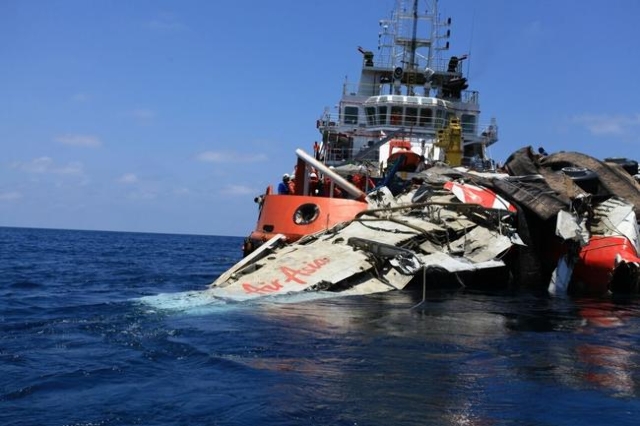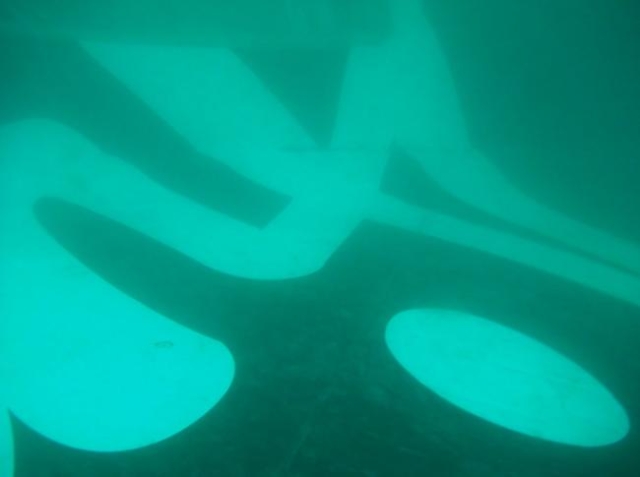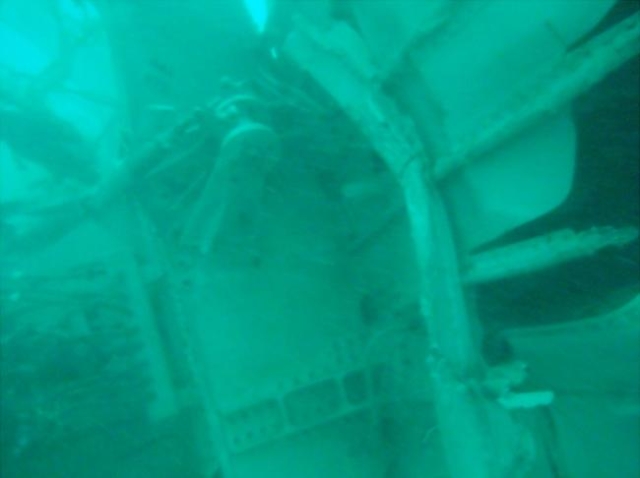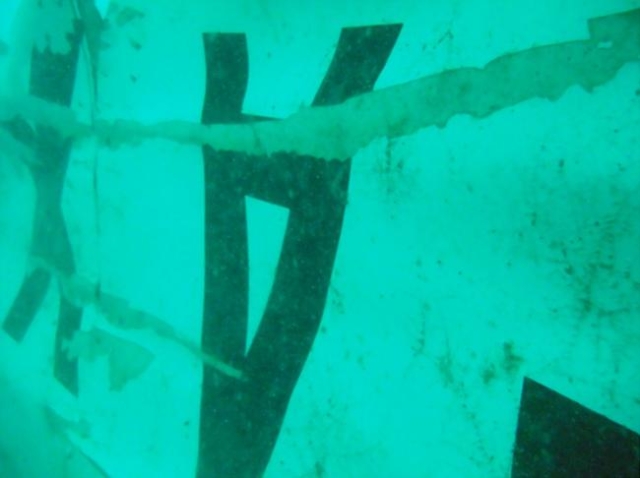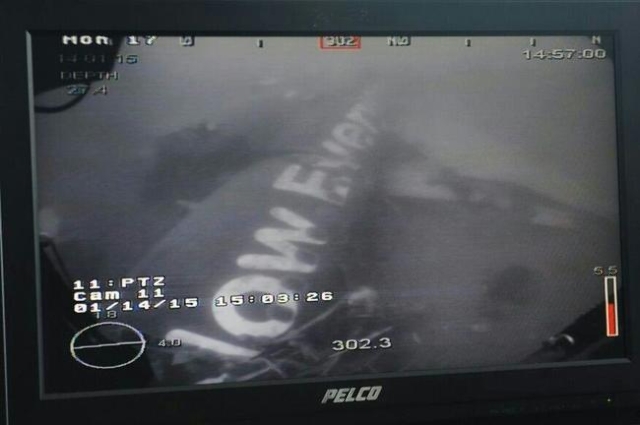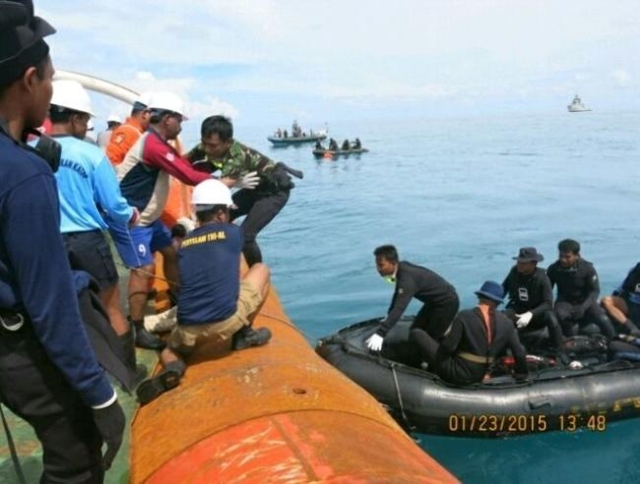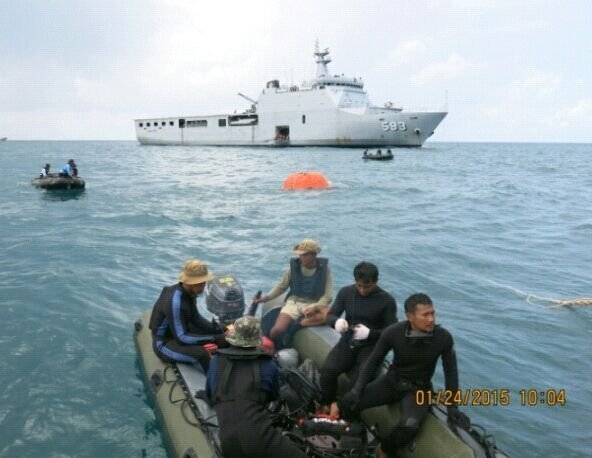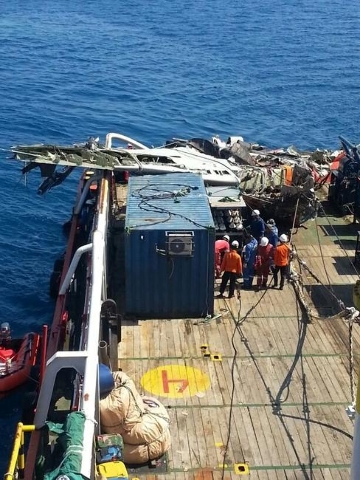Technical failures, pilots’ response led to AirAsia crash into Java Sea
The way pilots responded to a technical malfunction resulted in the crash of an AirAsia flight into the Java Sea, killing all 162 people on board, investigators said Tuesday.
AirAsia Flight 8501 was en route to Singapore from the Indonesian city of Surabaya on Dec. 28 last year when it crashed.
It was one in a string of aviation disasters that occurred in Asia in 2014, including the mysterious disappearance of MH370 over the Indian Ocean and the crash of TransAsia Flight 222 on a Taiwanese island.
In the AirAsia disaster, the system that regulates the plane's rudder movement kept malfunctioning because of a cracked solder joint. Aircraft maintenance records found it had malfunctioned 23 times in the year before the crash, and the interval between those incidents became shorter in the three months prior to the crash, Indonesia's National Transport Safety Committee said in a report.
"Subsequent flight crew action resulted in inability to control the aircraft ... causing the aircraft to depart from the normal flight envelope and enter a prolonged stall condition that was beyond the capability of the flight crew to recover," the report said.
In other words, "it's a series of technical failures, but it's the pilot response that leads to the plane crashing," CNN's aviation correspondent Richard Quest said.
Pilot training weakness
The investigation, a joint effort involving Australian, French, Singaporean and Malaysian authorities, points to weaknesses in pilot training in dealing with upsets, or when an aircraft is angled greater than 45 degrees.
"Our recommendation to AirAsia is to train their pilots flying the Airbus plane on how to make an upset recovery," investigator Nurcahyo Utomo said.
The AirAsia pilots had not been trained for that scenario, he added, because the manual provided by the plane's manufacturer said the aircraft, an Airbus 320, was designed to prevent it from becoming upset and therefore upset recovery training was unnecessary.
AirAsia has since required upset recovery training for its pilots, Utomo said.
Utomo also said the cockpit voice recorder showed confusing instructions from the captain to the co-pilot who was manning the controls at the time.
"The most interesting part that could be heard from the CVR is that whenever the plane went up, the captain said 'pull down.' ... To go down, the captain has to say 'push,' while to go up, the captain has to say 'pull' in reference to moving the side stick handle."
Cruising involves such high speeds, CNN's Quest said, that pilots responding without complete precision can often be disastrous.
"A huge amount of training is done on takeoff and landing and traditionally, of course, is 70-80% (of when accidents take place); only 10% takes (place) in the cruise phase of flight. But if something does happen in the cruise phase of flight, it does typically end up fatal."
Plane ascended rapidly before crash
Preliminary findings from Indonesia's NTSC earlier this year said roughly 35 minutes into the two-hour flight, the pilot asked air traffic control for permission to climb to avoid stormy weather.
The plane went from cruising at 32,000 feet, ascending steeply to 37,400 feet in about 30 seconds — something commercial planes are not designed to do. It may have been climbing at a rate twice as fast as it could and should, one analyst told CNN.
Minutes later, the plane disappeared from radar.
Although the area was experiencing turbulent weather patterns, seven other planes flying nearby landed safely.
Malaysia-based AirAsia did not have the clearance to fly the route on that particular day.
Indonesia's NTSC issued several recommendations to AirAsia and Airbus as well as Indonesian, U.S. and European aviation regulatory bodies, but the statement did not detail what they are.



